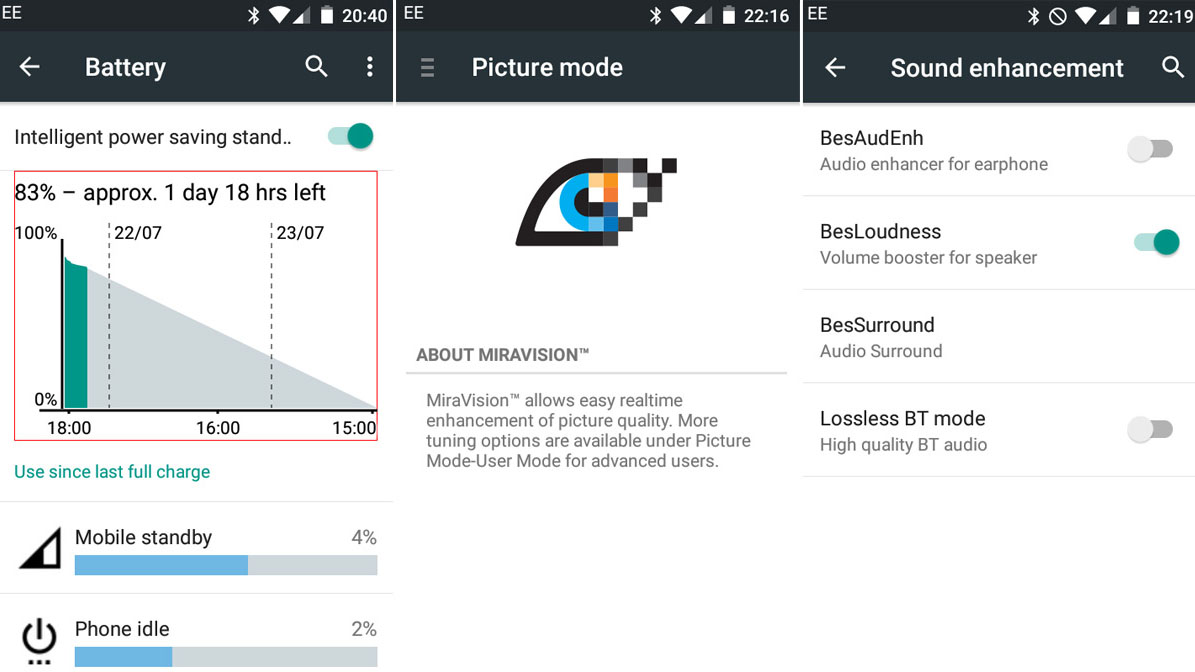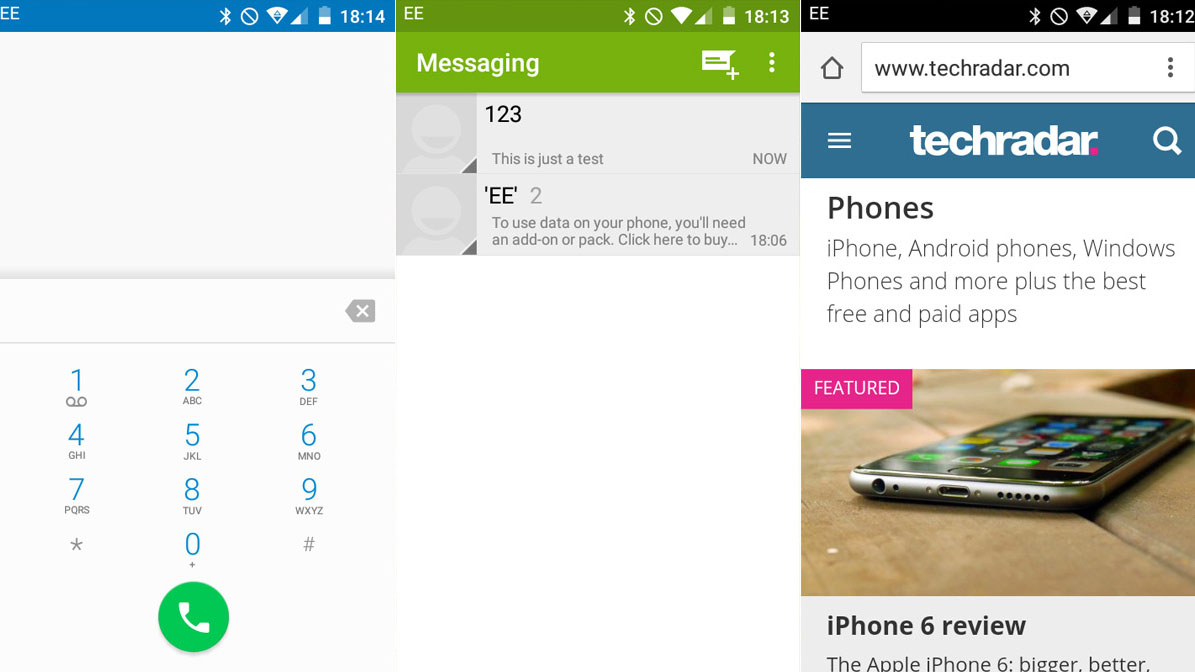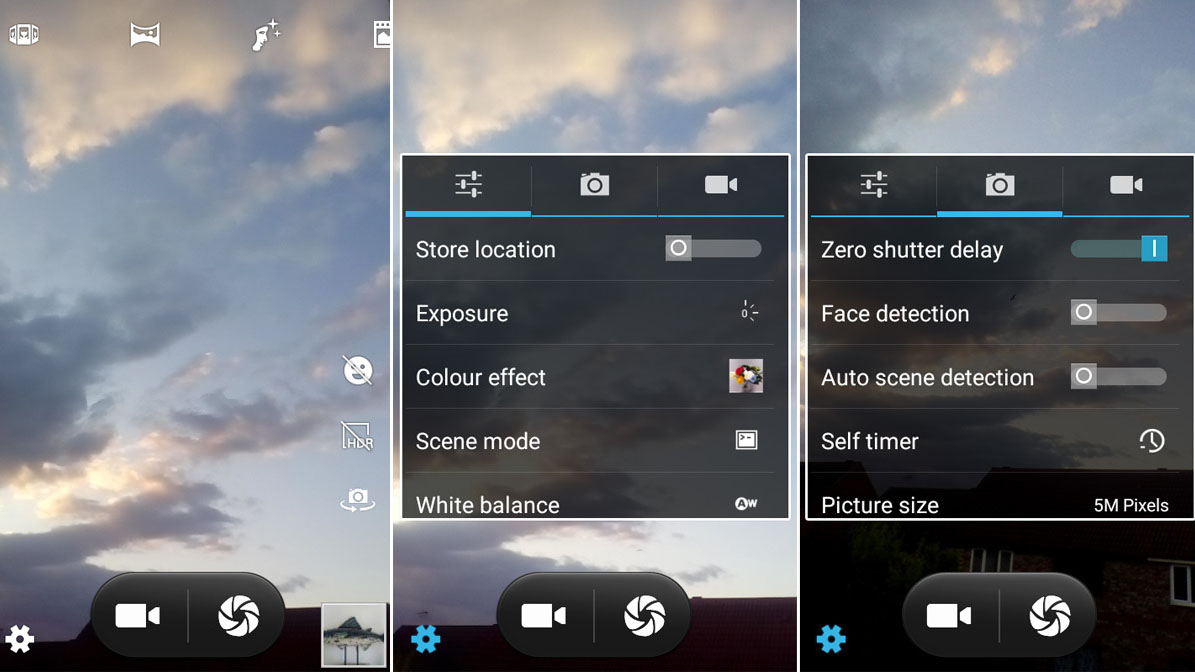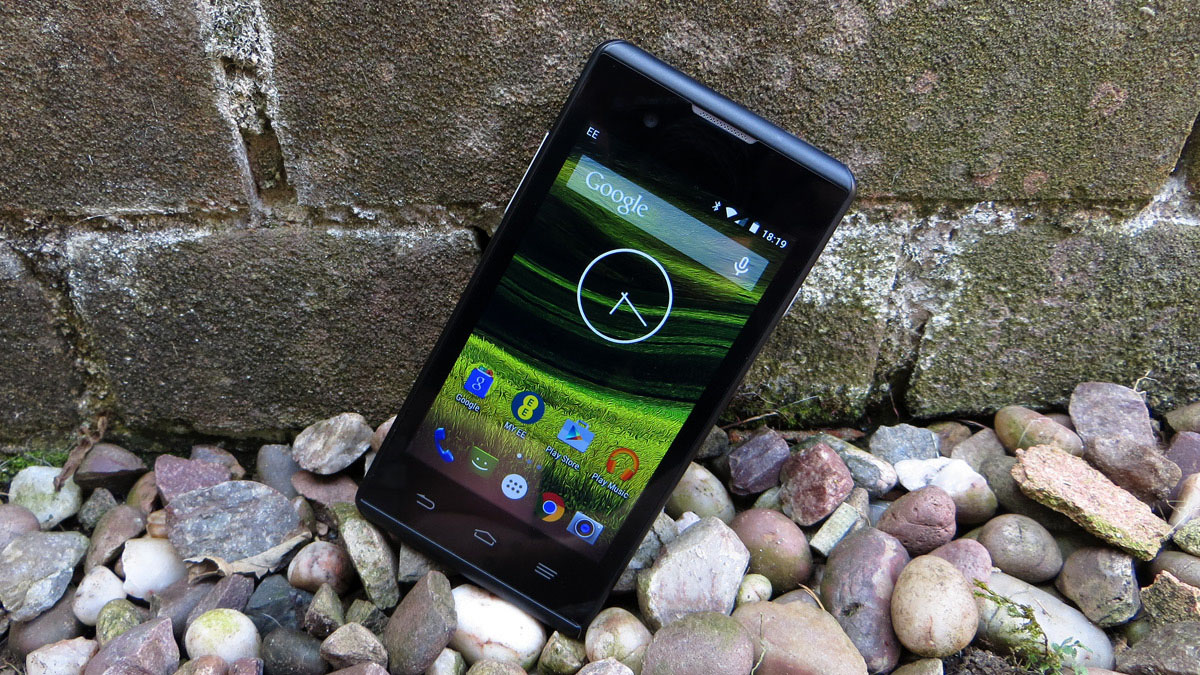Why you can trust TechRadar
So far you may be thinking that the Rook looks mediocre at best, but it does have a surprisingly sprightly processor at its heart. It's not exactly a benchmark buster like the HTC One M9, but considering where phones were just a couple of years ago, the 1GHz quad-core 64-bit ARM Cortex-A53 processor from Mediatek is perfectly capable of grinding through day-to-day tasks such as browsing, social network surfing and light media consumption.
Performance
The coupling of 1GB of RAM and an ARM Mali T720 GPU means that a bit of light gaming is even on the cards. However, with 8GB of system memory, and less than 3.5GB free straight out of the box, you may well run out of storage space quicker than you'd like once a few apps are installed (especially if they won't install onto a microSD card).
To give the phone the industry-standard workout, I installed the GeekBench 3 app and gave it the once over. I ran through the sequence of tests which revealed a single-core score of 488 and a multi-core score of 1,348, which actually pegs it slightly higher in the single-core test than EE's own more expensive Harrier Mini, while the multi-core score almost keeps up with the far pricier Huawei Ascend G7 which scored 1,398.
In real-world use, the Rook provides a good enough user experience. Swiping through home pages, menus and apps is as smooth as you'd expect from far more expensive Android handsets, though the limitations of 1GB of RAM show once you start to zip in and out of too many apps.
As far as the 4G performance is concerned, the Rook is compatible with EE's speedy 4G network, supporting speeds up to 150Mbps (but not the 300Mbps available in some cities around the UK). If you're thinking of taking the Rook onto another 4G network, it must support LTE at 800, 900, 1800 and 2600MHz. If you don't have 4G in your area yet, then there's always the far more widespread 3G to rely on.
Battery

Whilst it may only have a 1,500mAh Lithium-ion battery, the Rook's battery life wasn't as bad as I had expected. It easily lasted 24 hours if I didn't try and tax it with constant video streaming or gaming, although under load the battery ran down considerably quicker.
TechRadar has a standardised battery test which consists of running a 90-minute HD video at full brightness after fully charging the smartphone on test. After running this test the Rook's battery life dropped to 70%.
Sign up for breaking news, reviews, opinion, top tech deals, and more.
I would be surprised if anyone plans on watching movies of this length on the EE Rook, but the possibility is there, should you wish. If you're only using this phone for its basic features, you might even stretch the battery life to two days, as I found it rather frugal when in standby mode.
The essentials
With the latest version of Android Lollipop 5.1 on board, the EE Rook gets the software side of things pretty spot-on.
The stock phone dialler, contacts manager, and messaging app are all greatly improved and easy to use, and although the earpiece meant that call quality was quite tinny, I didn't find the signal overly poor.

Whether you preference Android's stock browser or Google Chrome, both are on hand for web browsing, which despite the limitations of a 4-inch screen is a smooth enough experience when compared to many other current smartphones.
Where software is concerned, there is nothing else particularly mind-blowing to report. Music is handled by the stock Android app, and the same goes for photos with either the Google Photos or Android gallery app on hand.
Camera
£50 can barely buy you a good compact camera, so to expect much from a smartphone at this price is wishful thinking. It has a 5-megapixel camera on the rear, and a rather pathetic 0.3-megapixel camera up front.
With a slow interface and fixed-focus optics, it seems that this is another area where ZTE cut corners when making the Rook for EE. Even in the most perfect daylight conditions, pictures feature an awful lot of noise and digital smearing, which makes most of the pictures look rather artificial. The lack of flash means that indoor shots always appear grainy and lacking in detail.

I had hoped that the camera would at least be good enough for social sharing, but the photos are only passable if you leave them un-cropped. Any zooming in exposes the lack of detail to an unusable degree.
A very underwhelming panorama mode is available, and the HDR mode is largely a waste of time – it gives photos a bright, unnatural feel rather than improving the overall contrast.
I did get a brief moment of pleasure from the multi angle viewing mode, which asks you to drag the camera from right to left around a stationary object to create a "3D" image. You can then view the photo from various angles in the gallery. However, if the subject is moving you'll just end up with a small video, not a multi-angle photo. Unfortunately, you can only view these pseudo-3D images on the phone, and the resolution is very low, so the feature is largely pointless.
The Rook's front facing camera is as poor as you would expect with 0.3-megapixels. It's barely good enough for a video call, let alone the oh-so-important selfie that will be paramount to any teenager attracted by the pocket money pricetag.
Video recording is barely worth a mention, with a maximum "fine" resolution of 864 x 480, and a number of other lower resolution options available – all the way down to a bewilderingly poor 177 x 144 pixels.
If you're looking for a more capable camera on a cheap smartphone, then you'll need to pay that bit more for a Motorola Moto E or Microsoft Lumia 640.
Current page: Performance, battery, essentials and camera
Prev Page Design, features and interface Next Page Camera samples